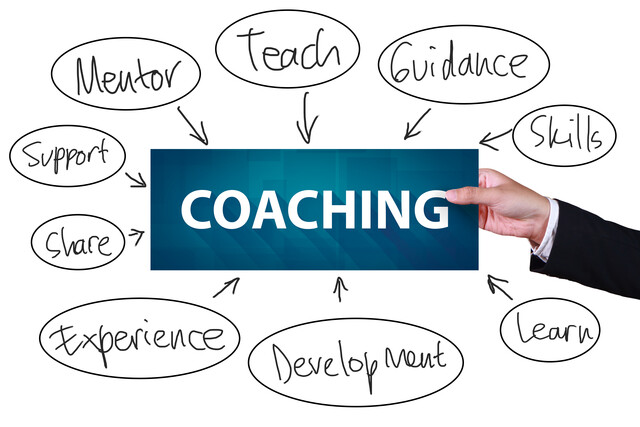If you are working with a client who wants to find a new job, you need to be armed and ready with a plan to help the client connect with the desired career path. In short, you need to be able to push the client in the right direction.
A good job hunter is one who is prepared with the things the recruiter or human resources department wants job candidates to have handy:
- r�sum�;
- career objective;
- a sense of what the person can offer.
Your clients need to be ready to go into this new job hunt in a different way from the approach they might have used before. This is not just an attempt to find a job. This is a decision to find the best possible job that falls in line with their skill set, needs, and desires.
The r�sum� needs to be rewritten in order to emphasize the skills that will best help the client land his or her ideal job. When a client creates a r�sum� of all personal skills and experience, it needs to be crafted as though the person has already found the right career or company.
Talk to your clients about seeking out a r�sum� writing service to help them polish their r�sum� if they are not able to do it on their own. Some might simply want to start from scratch, thinking about the skills they have to offer, rather than try to revamp an outdated version.
A career objective is a statement of intent for the career path your client wants to take. This might be a clear statement of what the person wants to do in the job or what he or she wants to achieve through work over a lifetime.
In either case, this statement needs to be short. It should give the person at the interview a clear sense of what your client wants to do and how she or he will fit in with a company.
Once your client is ready to go with the right tools, he or she can begin to hunt for jobs. The search for the right career is not the same as looking for a job, nor should it be. Your client should be ready to look for work in a new way that connects her or him with people who understand what the person wants.
Here are some ways to get people to come to your client:
- Networking sites: Getting on board with places like LinkedIn will work to help clients post what they want from a new job, connecting with the people they want to connect with, eventually reaching out to a person who might be able to help them.
- Twitter and other social media sites: These are public sites that can generate attention and help your client find a new job, but they should not be used if clients have not quit a current job or do not want anyone to know they are looking for new work.
- Posting their r�sum� on sites: The more clients can spread the word about what they can offer, the more they can begin to connect with new companies that want exactly what they have to offer.
The traditional job hunting sites also work, but clients should be sure to create profiles that detail exactly what they want, nothing more and nothing less. This is not a job hunt to see how quickly a person can find a job.
Applying for jobs when you need money differs greatly from applying for jobs when you want to find something that makes you happy.
You need to coach your clients into creating a new mindset:
- Craft a unique r�sum� and pitch for each job. This is not a time to come up with one cover letter that applies for any job. Your client is not applying for any job. She or he is applying for the job. The client's passion and enthusiasm need to come through on every page.
- Use the person's personality. This is also not the time to think about how the new company might want your client to act. Your client needs to be focused on showing others what his or her personality already is. The client is not going to change for others. She or he is going to find employers who already want what the person has to offer.
- Go into every job as though it is the one. There is no time in this sort of job search to simply try to do well. Every job that your client applies for needs to be treated as if it is the perfect job. If it is not, your client should not be applying for it.
- Remind the client what he or she has to offer. This sort of job hunt differs because the client is going to focus on what she or he has to offer, not on personal weaknesses. Even if the topic comes up, the client should be ready to talk about how personal positive attributes are far more interesting and helpful.
A job hunt for a new vocation or the vocation is not just a search for something that will work. This is a job hunt in which the client is able to find the work that absolutely is the job of his or her dreams.
If you have ever been planning to go somewhere, you did not start out without a map. You may have either found a map on the Internet or bought one from a store, but you always looked for some sort of map in order to ensure that you ended up where you wanted to.
The same thing should be done for your client as well. However, when you are a career coach, there might not be a clear path from one point of the person's life to another. When you work with clients on a road map, you focus on creating their ideal road map, a visionary piece that can help them begin to see how they might move from one career to the next and how their success might look when it is finally laid out before them.
Some career coaches will create a very rigid plan for their clients; but as you may already have realized in learning about being a coach, clients often already know what they want and how they might be able to make their own success happen.
The kind of road map you will create often will be based on what your client wants to create and will depend on the type of person he or she is. Some clients might want to create a list of things they should do in order to get a different career, or they might want to create a map that will help them better decide what map is right for them.
This is where your coaching skills might be tested; you need to understand who your client is and what might work best for that person's personality.
Some clients will be open to trying out any sort of tool you can offer, while others might want to do something a bit more "normal." A road map is a system in which you will answer the following questions:
- What does the client want?
- How does the client want to reach her or his goals?
- What are the eventual goals the client wants to achieve?
- What motivates the client?
This sort of tool is going to work best when the client is not sure that your interviewing and coaching sessions have been effective. If they are feeling stuck, maybe it is time to use a road map.
A road map can look like the following:
- a collection of words;
- a collection of images;
- a list of action steps.
Let clients direct themselves to what makes sense, but you can give them some coaching as they begin to create this tool.
Some people find that working with images is easier at first. Have magazines and newspapers available when you are working with the client, or suggest that the client begin to print and collect images he or she might want to add to a personal road map.
These images may or may not specifically relate to the career goals the person has in mind, and that is okay. The goal is for the client to begin to understand the type of person she or he is and thus be able to understand what type of career might be a good fit.
Others, however, might want to find images that relate to the sort of career desired.
The client should then paste the images or words onto a large piece of paper. This way, the person can begin to see what might come out of her or his ideas. The client can see all of the ideas collected and how they might relate to each other. Just by writing out the ideas, the client may begin to see what is wanted and not wanted from any future career. Some clients might also begin to create a list of things they need to do in order to reach the different goals they have just uncovered.
The road map exercise could help all clients think more about what they want and how they might be able to get it. What can help some people is to create a list of action steps to be taken as a result of the images or the words they have chosen.
Clients might then create a sort of map that can help lead them to their eventual goals. For example, they might create a starting point on a piece of paper for where they are now and then make a flow chart of sorts that shows what they need to do next, then next, then next, etc.
This way, the client is writing a career plan that already is tailored to what they want and what they know they need to do. Most clients, though they may not realize it, already know how they need to help themselves; all they need is for you to help them see it.
With a road map, clients will be able to sort out all of their thoughts and begin to see what needs to happen in order to ensure that career plans can work out.























